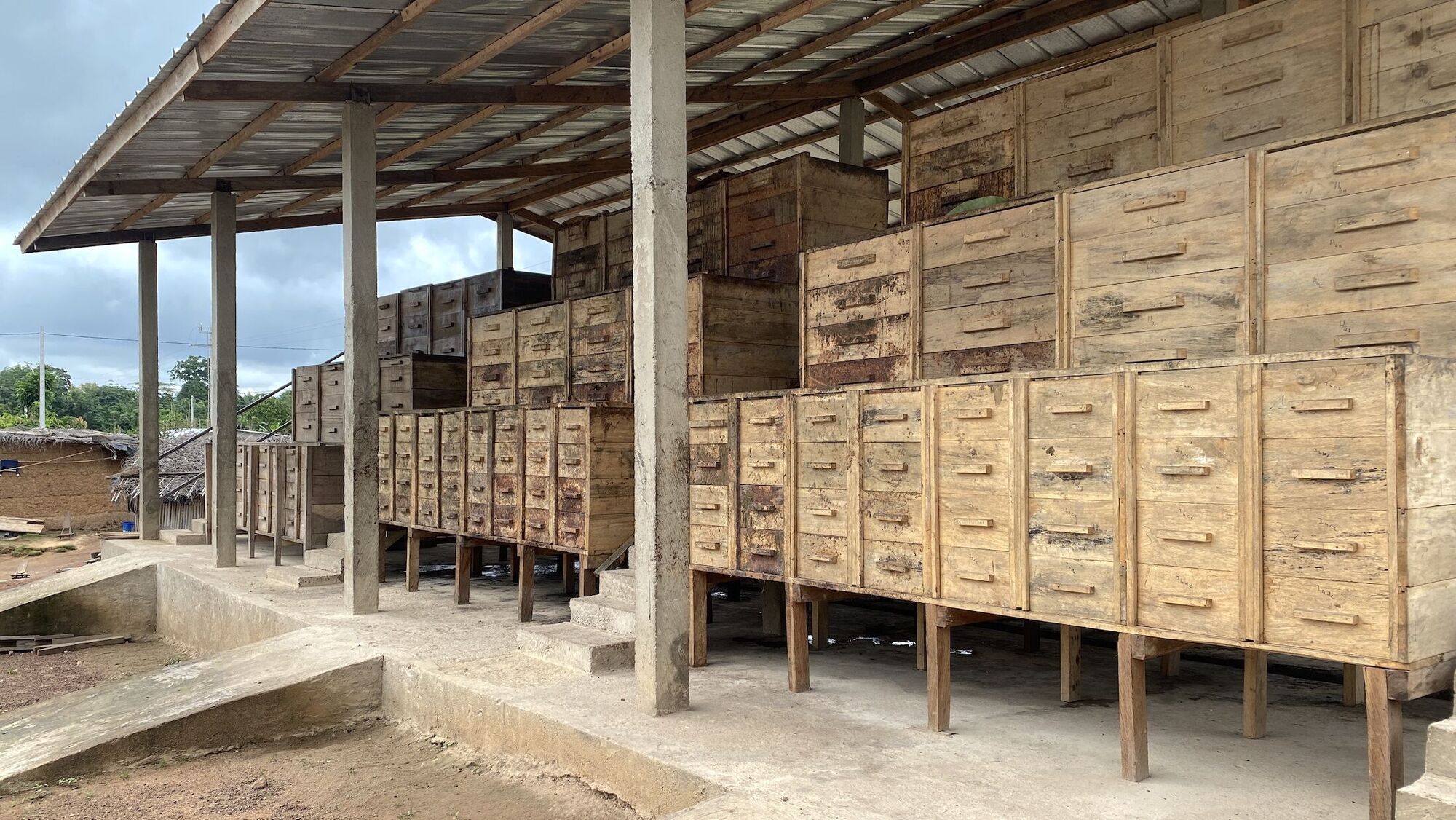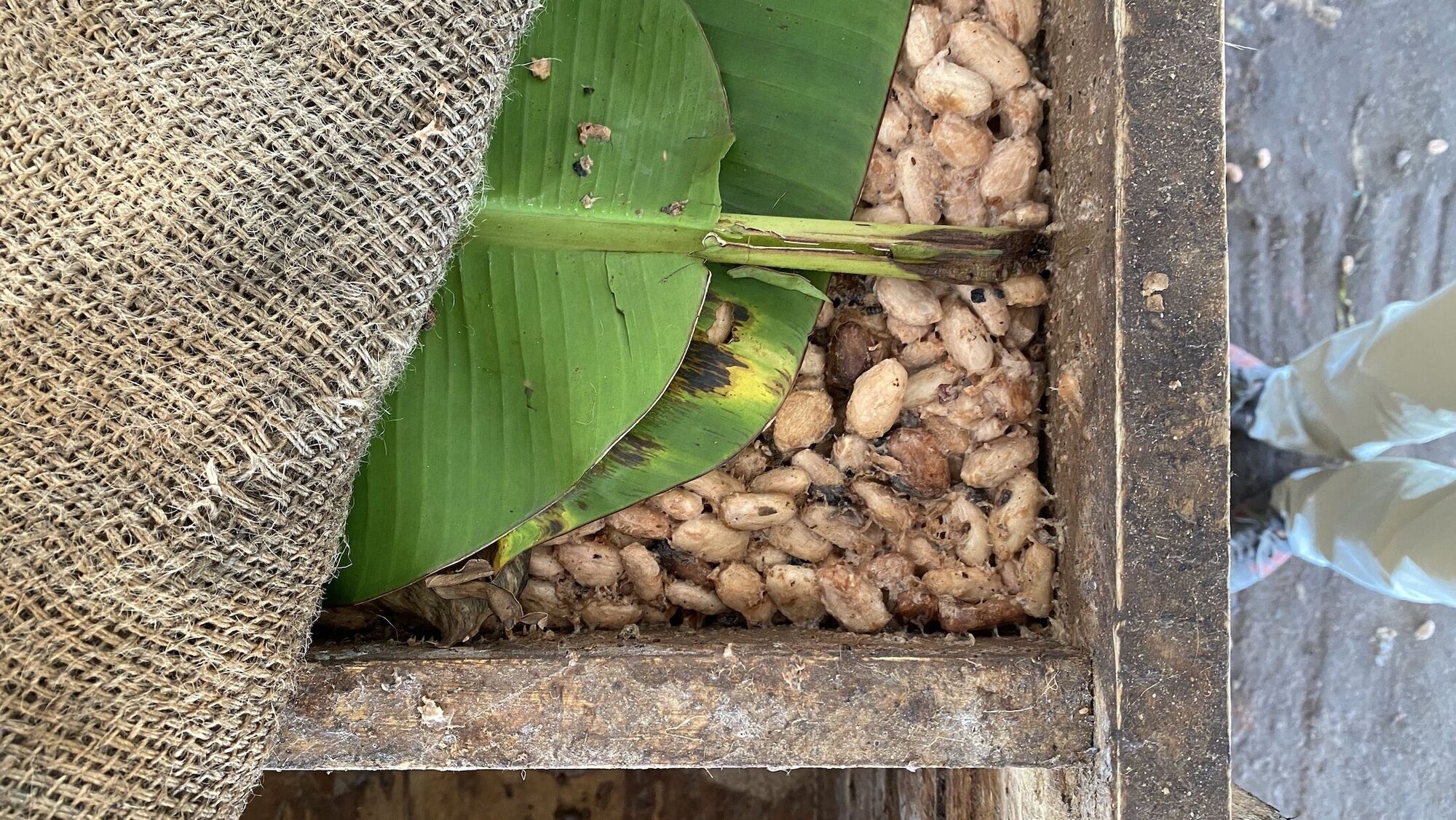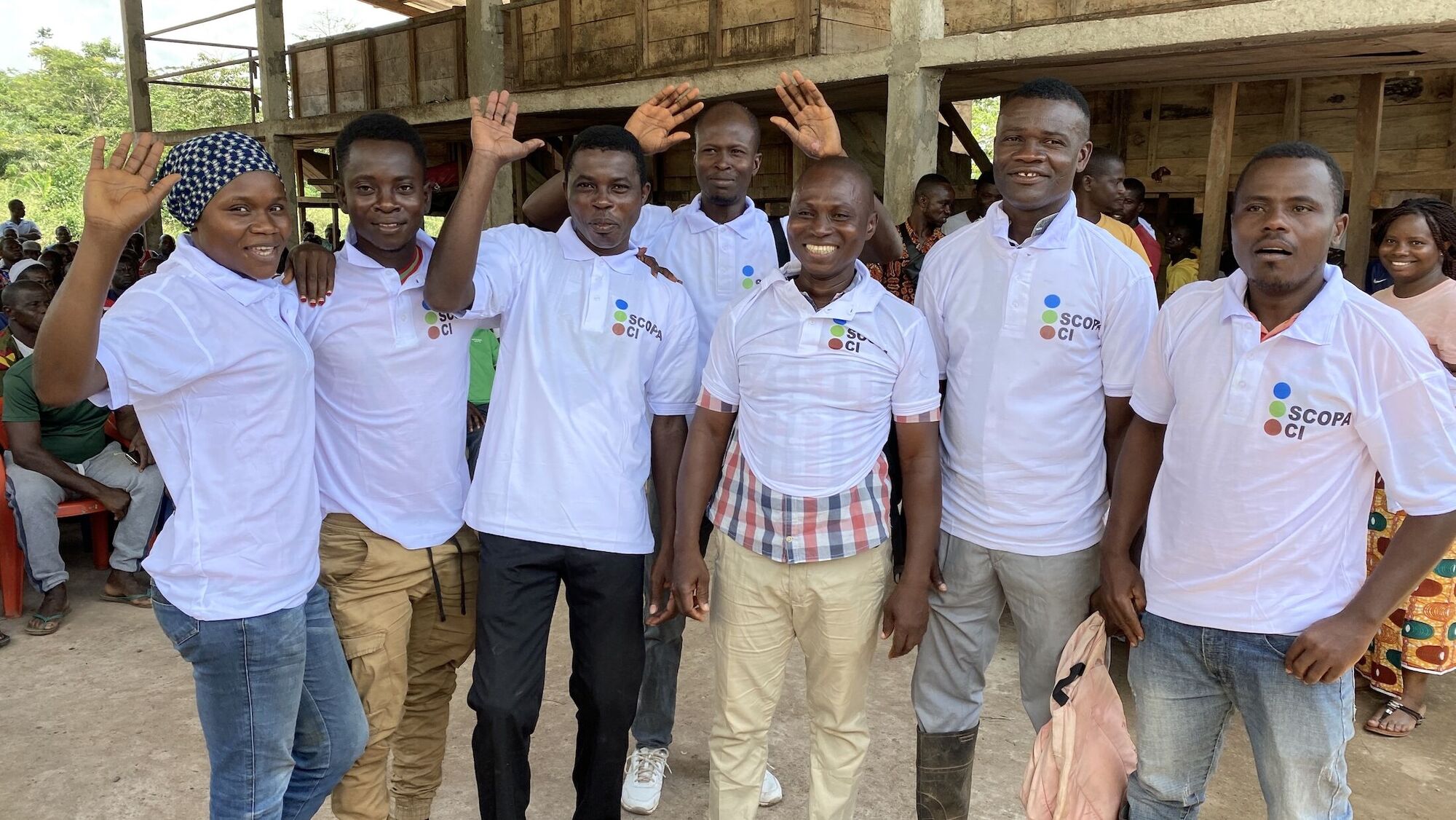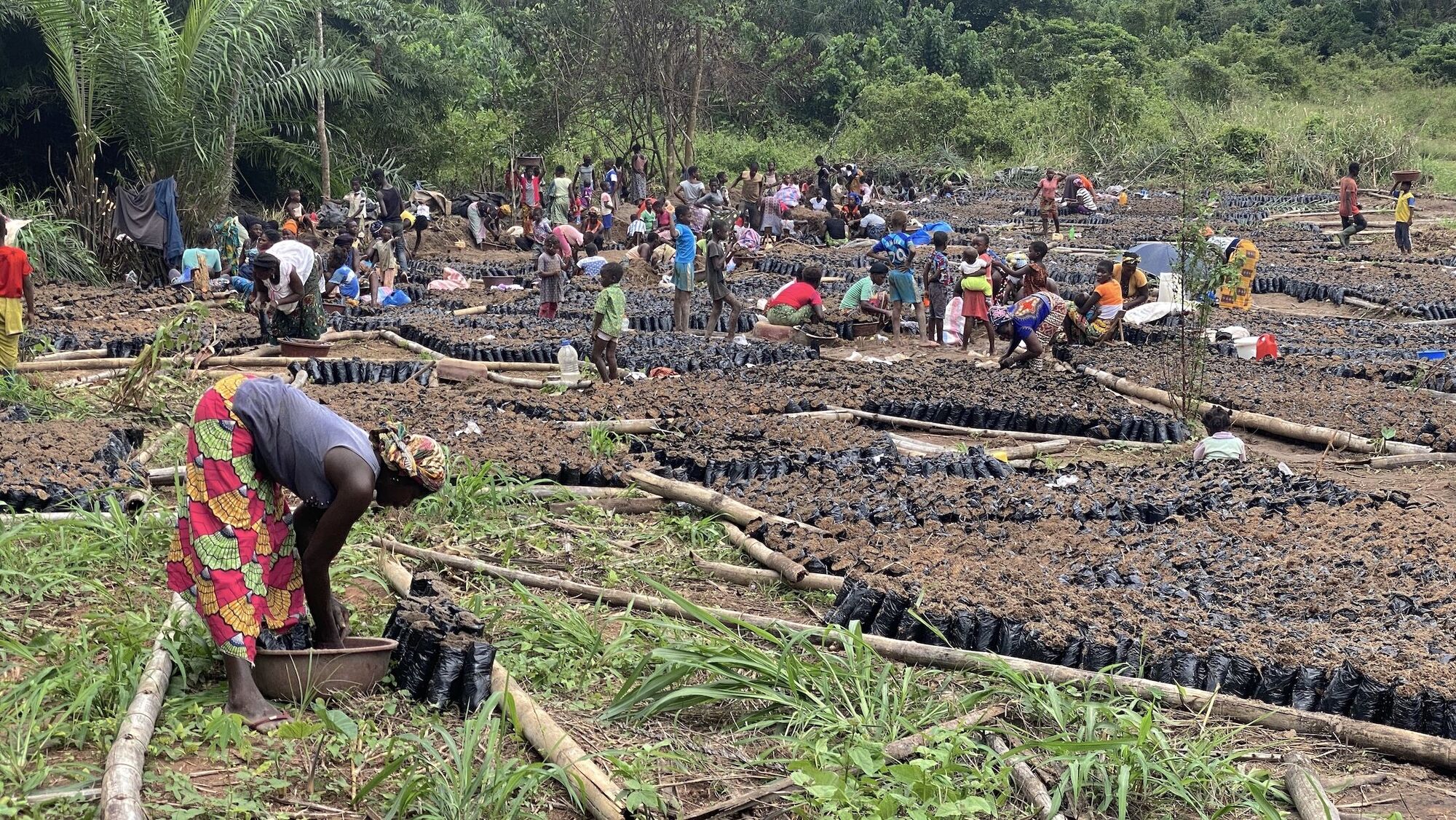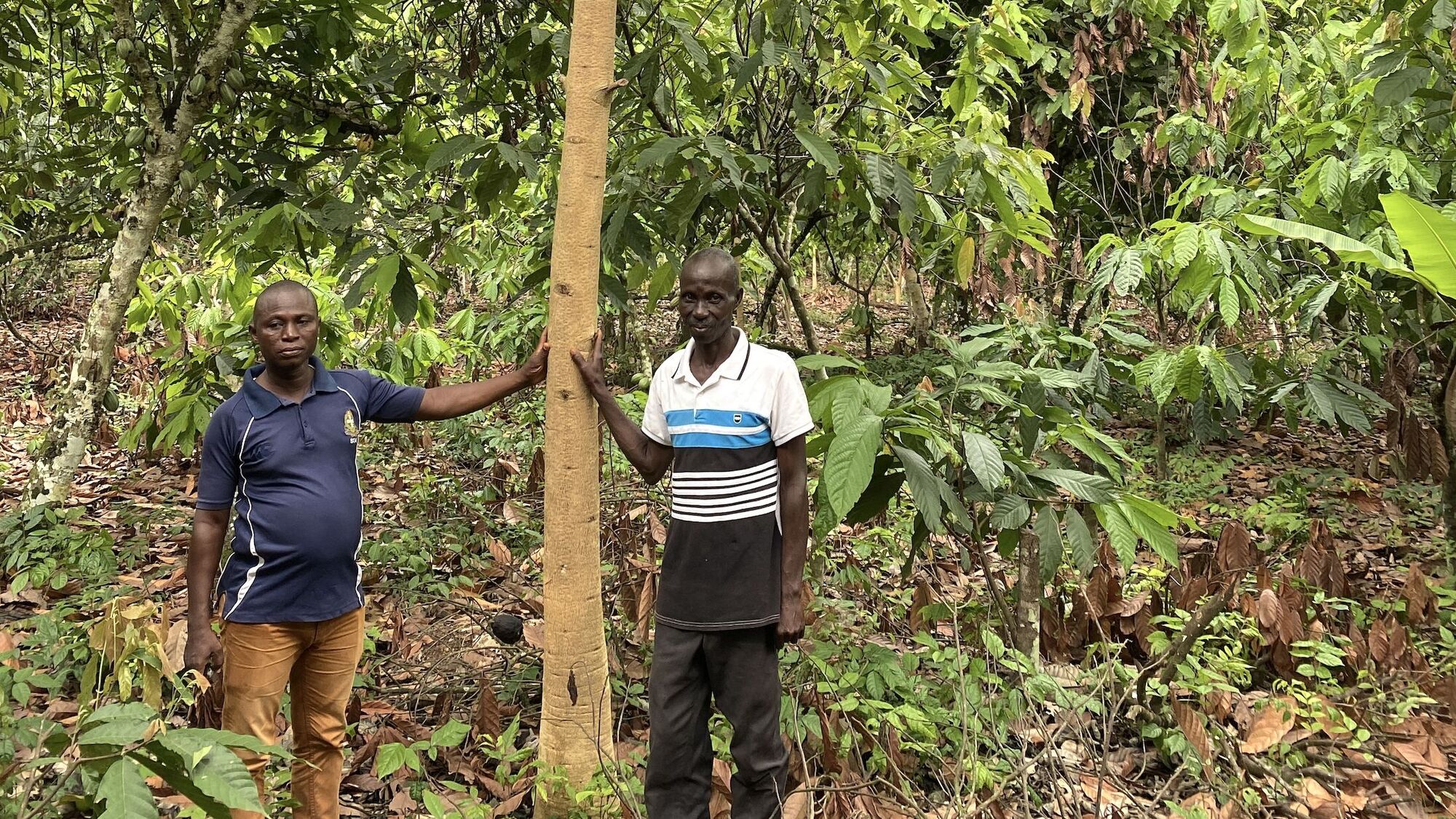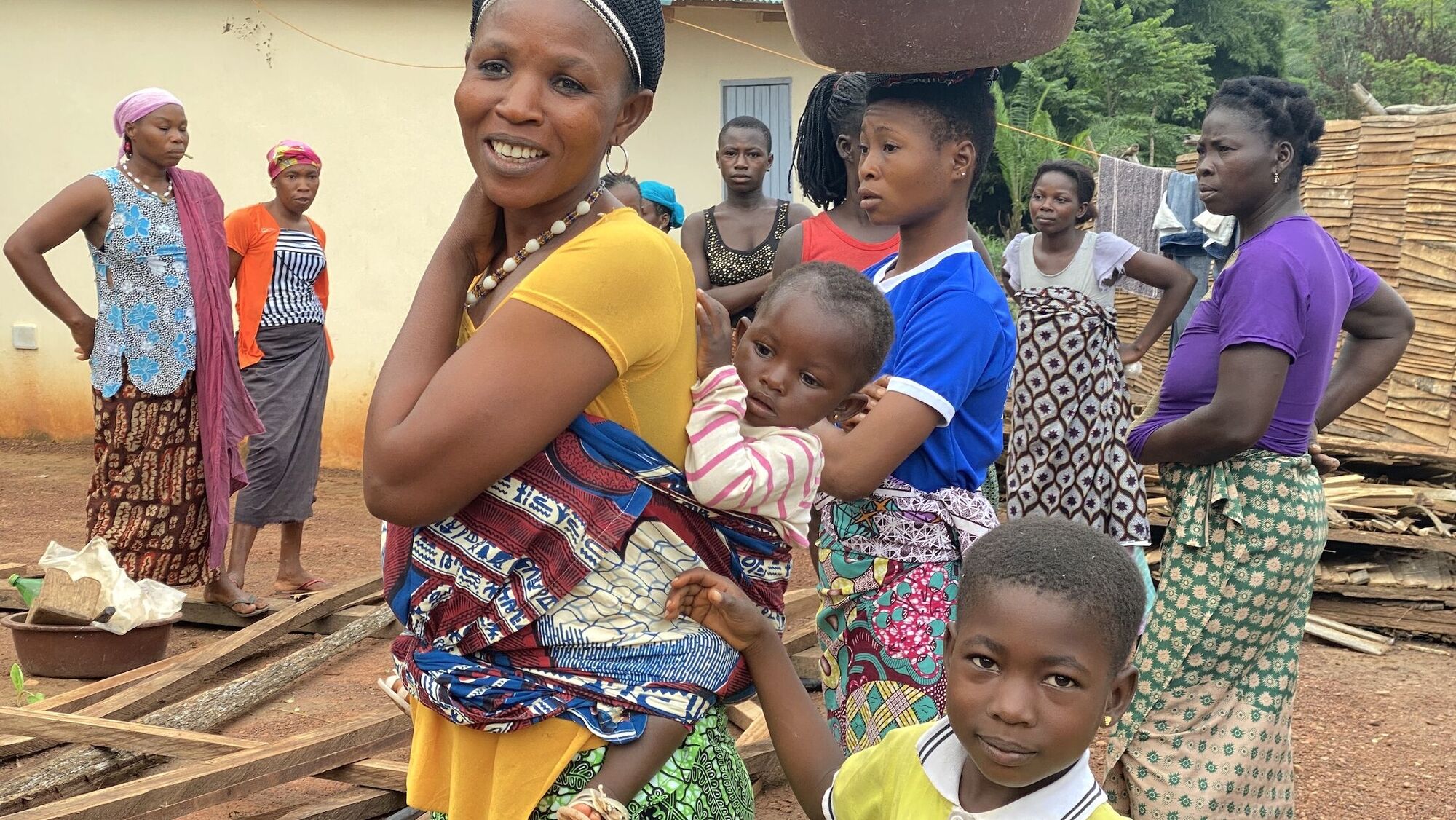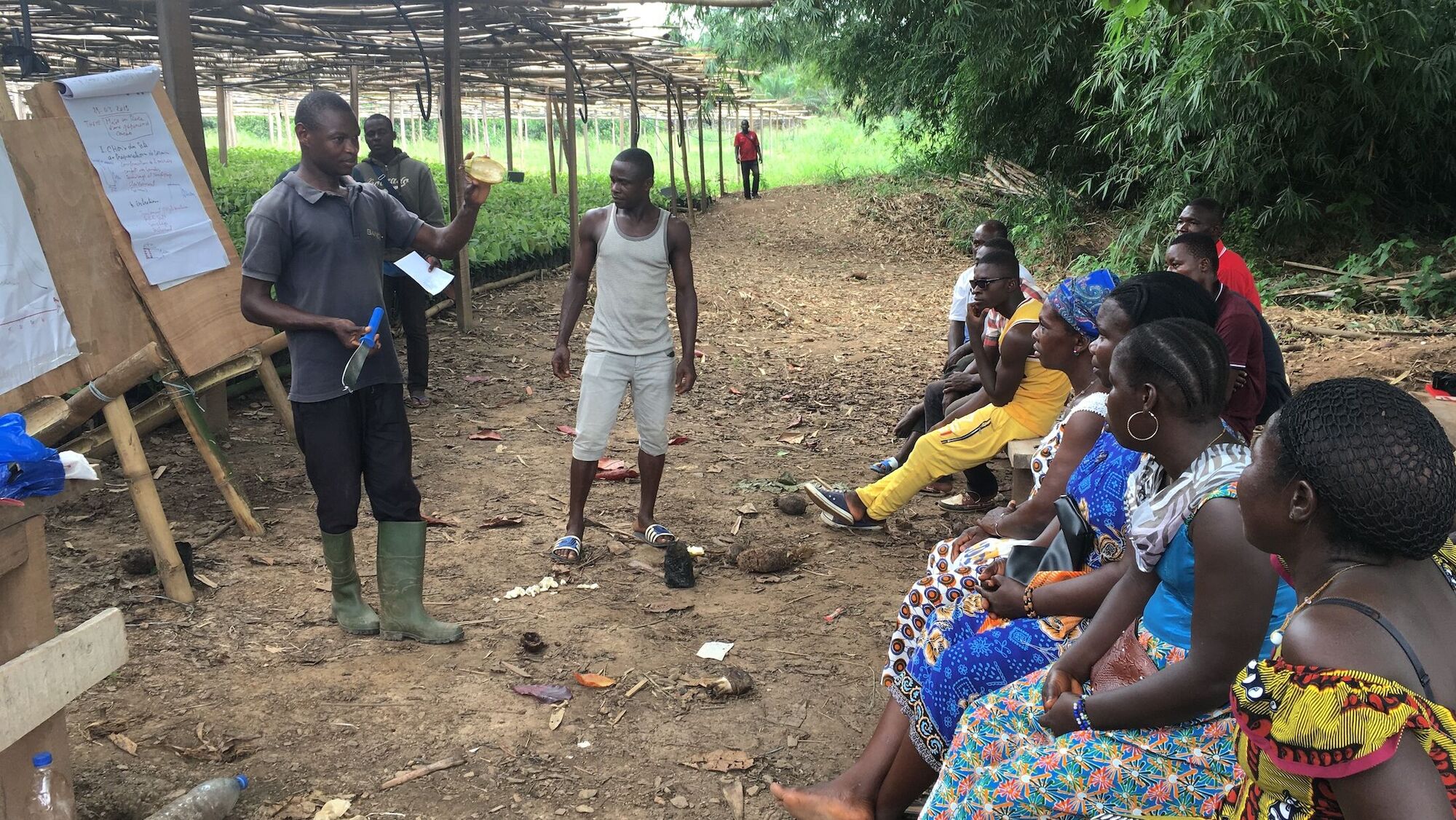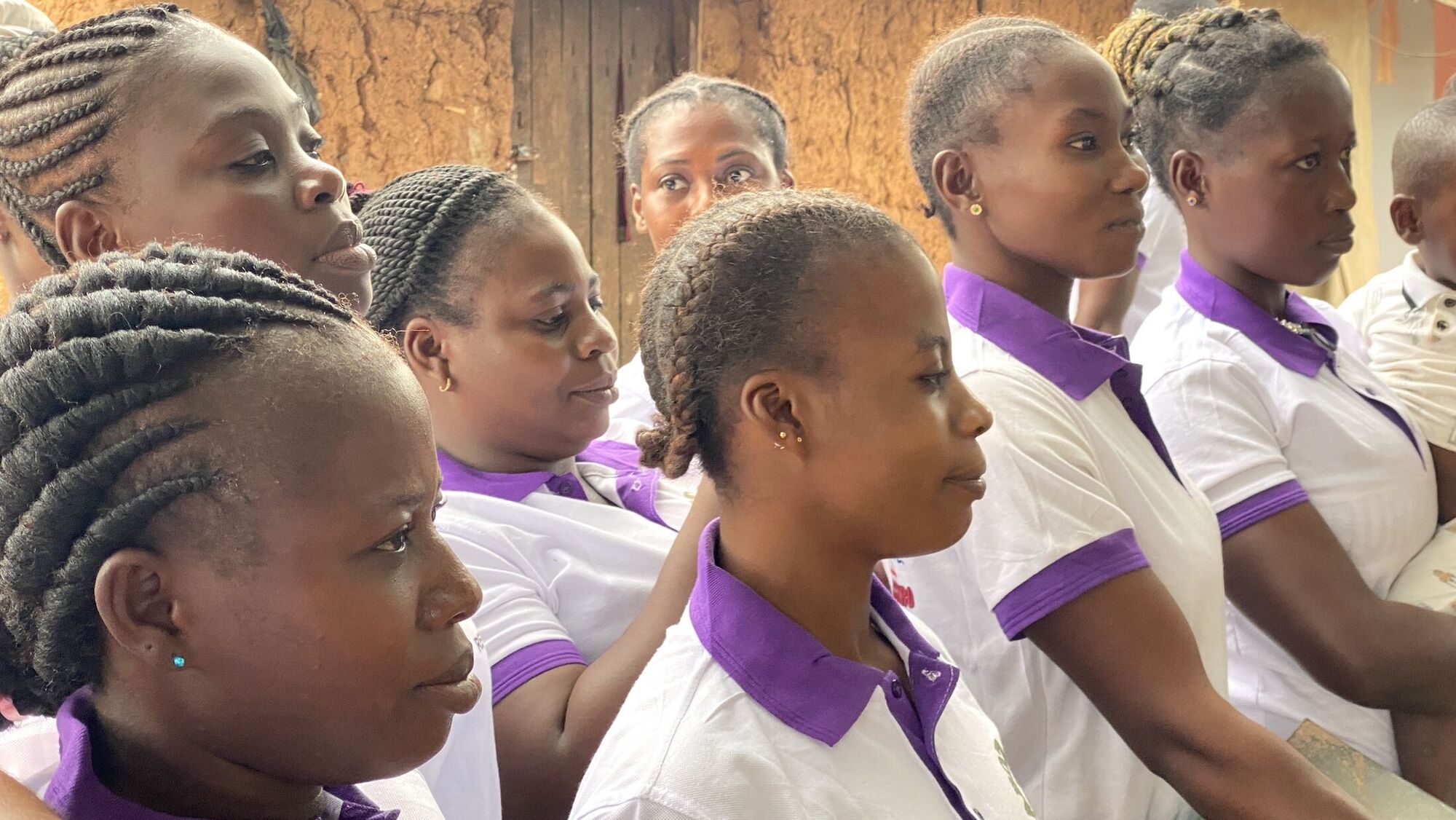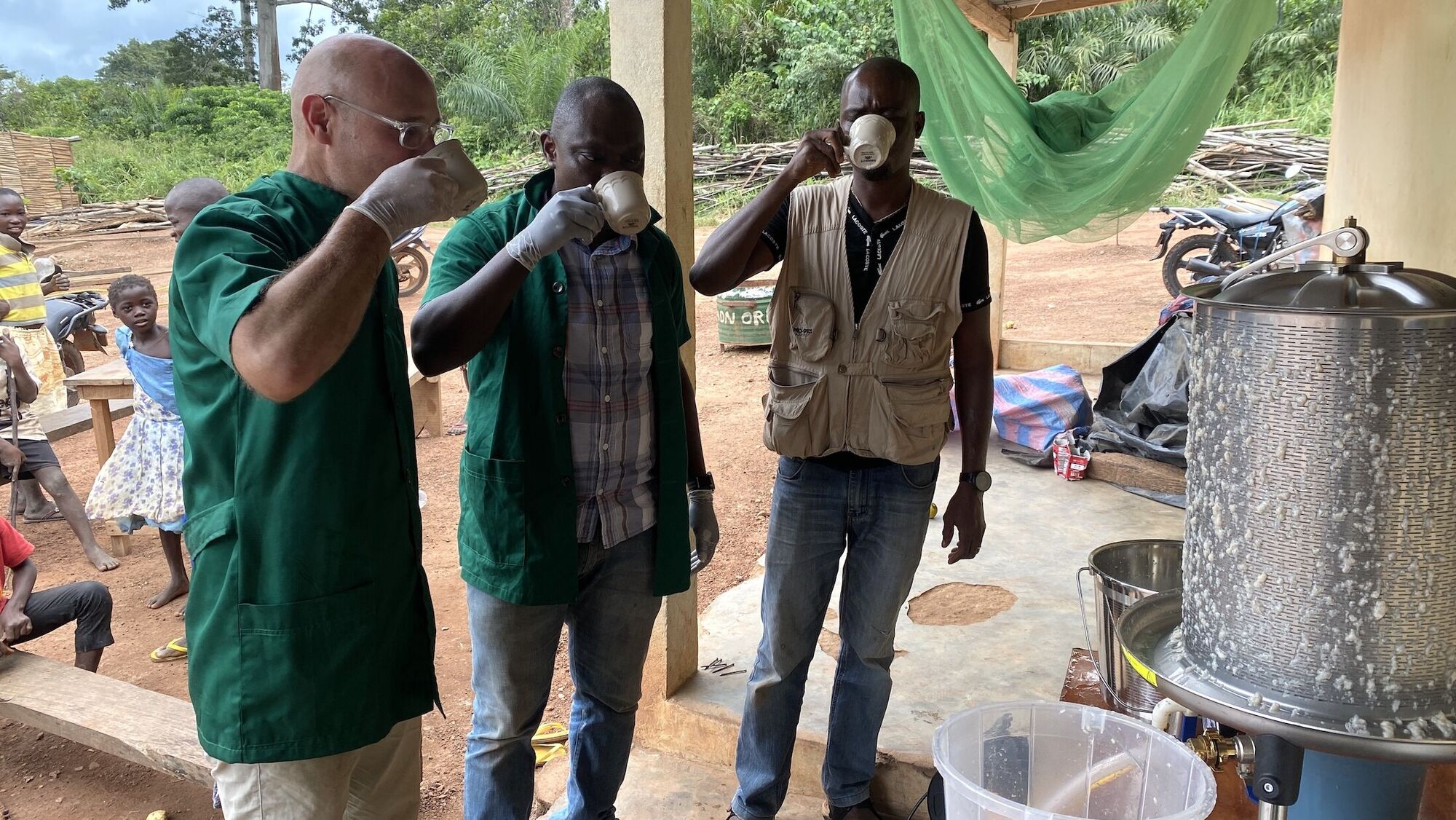Village Cocoa Competence Centers
What the project was about
In Côte d'Ivoire, the heart of global cocoa production, farmers usually ferment and dry their own cocoa before selling it to buyers. Quality varies widely and prices are low. In addition, cocoa plots are usually grown in monoculture and are overaged, while the practice of agroforestry and the use of shade trees is rare. The project aimed to trigger change in order to improve farmers’ income and increase the quality of the cocoa.
What was done
CABOZ – a Swiss company helping its customers to set up direct and sustainable cocoa supply chains – and its partners established two village-based competence centers in the Nawa region. The centers now offer a wide arrange of services to farmers, which includes:
- Buying wet cocoa from farmers and fermenting and drying it in a standardised method in newly built facilities, before selling it to customers
- Trainings farmers in good agricultural practices
- Supporting farming communities to produce high quality cocoa seedlings and shade trees to rejuvenate and diversify cocoa plantations
- Running newly established savings groups combined with support in income generating activities and financial literacy trainings
- Selling agricultural tools and inputs to farmers in new shops associated with the competence centers
What the project achieved
During the three years of the project, the following results were achieved:
- 127 tonnes of fresh cocoa purchased from 305 farmers were processed at the fermentation and drying facilities of the two compentence centers.
- 1'461 farmers received training in farm rejuvenation, income diversification, climate change resilience and the integration of shade trees in cocoa plantations.
- Farming communities produced 444’563 cocoa seedlings that were distributed to 1'148 farmers. Of these, 98.6 % survived in the field and allowed 333 ha of overaged plantations to be rehabilitated (0.29 ha per farmer).
- 26'784 shade trees were produced, of which 67 % survived in the field.
- 744 jobs were created, most of which are day-labourers.
- 17 savings groups were established with 595 participants, 282 of them women.
- Two warehouses were built next to the fermentation facilities, supplied with 35 tonnes of fertilizer.
What didn’t work or had unintended consequences
The volumes processed at the two fermentation facilities during the three-years project were below expectations, at 42 % compared to the target. One reason was the widespread mistrust of farmers in the weight relation between wet and dried cocoa. Another reason was the difficulty of CABOZ finding a customer who is willing to pay a higher price for the improved quality coming from the centres. This made CABOZ reluctant to buy more fresh cocoa from farmers, fearing financial losses in a market that is characterised by low margins.
Also, the originally planned establishment of mobile savings accounts for the payment of premiums was abandoned due to the low acceptance and high costs of mobile payment systems in Ivory Coast. Instead, village savings groups and loan associations were created, which have proved to function very well and are very popular.
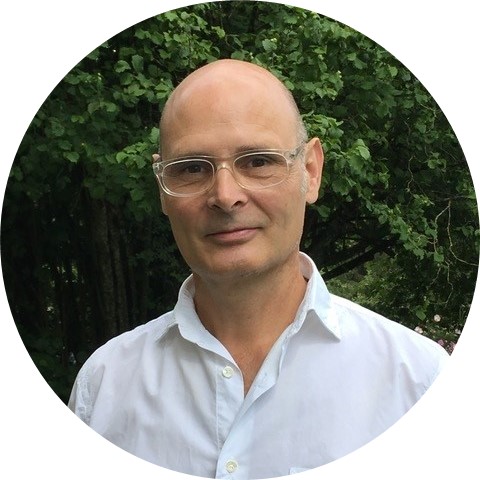
"We ensure long-term knowledge transfer and innovative ideas by working with local staff and involving farming communities directly in the project."
Interview with Daniel Stähli, CEO of CABOZ
Daniel Stähli, in what ways were the project’s approaches new and innovative?
Our approach was new since village based centralized fermentation is uncommon in Côte d’Ivoire. Our competence centers not only provide various services to farmers, but also lead to a higher quality of cocoa. Moreover, in setting up the competence centers, the role of CABOZ as a sourcing company is changed from that of a mere trader with a loose relationship with the farmer to that of a service-provider with a permanent local presence, close to where farmers live and work. This improves our collaboration with the farmers, to the benefit of all.
What has CABOZ learned through the project?
To make such projects successful, it is key that farmers have a short and long-term benefit. For example, we have overestimated the importance of the time saved for the farmers by centralised fermentation. Some even felt that their self-perception as working farmers was disturbed. The main leverage is the price, so farmers must have a substantial financial advantage from participating. The same is true for our customers. Improved physical and aromatic quality is not much rewarded in the Côte d’Ivoire context. Value propositions rather include aspects like higher farmer income, no deforestation and child labour prevention and monitoring.
What do you recommend to other stakeholders implementing similar projects?
To avoid the problems elaborated above, we suggest investing in simple communication combined with rumour management. This is key when it comes to overcoming people’s mistrust or reluctance to participate in a project.
What are the next steps?
Despite the lower volumes fermented than planned, we continue running the competence centers with its various services. To make it an economically sustainable and scalable model, we have invested into the planning of production plants to extract cocoa juice from fresh cocoa delivered to the centres. Our calculations show that revenues will allow us to keep the cost for the fermented cocoa at market prices, while still enabling us to offer farmers a higher price as a step towards a living income.
In addition, in a new three-year project phase financed by our main customer Bahlsen, we will shift from a focus on cocoa to a more holistic approach towards dynamic agroforestry. This is due to the fact that many farmers continue to view shade trees as competitors to cocoa trees and do not support agroforestry without an economic value visible from the outset.
How is it ensured that the project has not only short-term, but long-term effects?
We ensure a long-term transfer of know-how and innovations by working with locally recruited staff and by integrating farming communities directly into the project. Also, we have shifted the production of tree seedlings from a central seedling farm to smaller community-based seedling sites, which involves the communities even more closely in the project. As we are only rejuvenating ¼ ha per farm, the project aims to motivate farmers to continue rejuvenating and diversifying the rest of the farm on their own, based on the experience gained through the project.
As for the competence centers, with additional values generated through the extraction of cocoa juice from fresh cocoa, the centralised fermentation of cocoa will proof to be an economically sustainable strategy. And last but not least, the Village Loan and Saving Groups and microbusinesses function largely independently after three years, requiring just little continuous support.
Organisations involved





